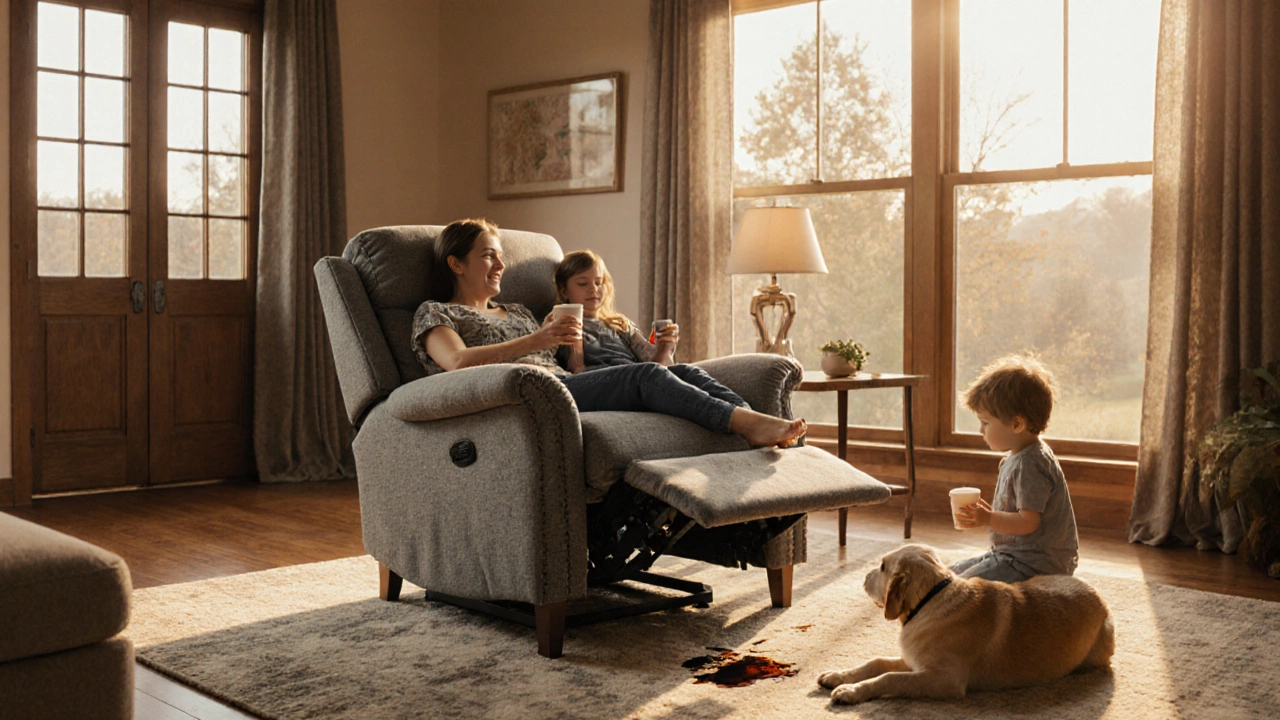Comfortable Recliners: Your Guide to Choosing the Perfect Relaxing Chair
If you love kicking back after a long day, a good recliner can make all the difference. It’s more than a chair – it’s a mini‑home for your back, neck, and legs. In this guide we’ll break down what makes a recliner comfortable, how to pick the right one for your space, and what you need to know about Medicare coverage if you’re buying for health reasons.
Key Features to Look For
First, check the recline mechanism. Power‑recliners are smooth and easy, but a well‑built manual lever works just as well and saves electricity. Test the range – you should be able to go from upright to a full‑lay position without feeling cramped.
Support matters too. Look for high‑density foam cushions and a sturdy frame, preferably hardwood or reinforced metal. A lumbar pillow or built‑in headrest adds extra comfort, especially if you have back pain.
Fabric choice affects both feel and durability. Leather feels luxe and wipes clean, but can get sticky in summer. Softer fabrics like microfiber or woven cotton breathe better and hide wear, which is handy for homes with kids or pets.
Size is another practical factor. Measure the width of your sofa or the corner where you plan to place the recliner. You’ll want at least a 2‑foot clearance behind the chair so the footrest can extend fully without hitting a wall.
Recliners and Medicare: What You Need to Know
Many seniors wonder if Medicare will chip in for a recliner. The short answer: only if the chair is classified as durable medical equipment (DME) and prescribed by a doctor for a specific medical condition. Brands like Lazyboy sometimes offer models that meet DME standards, but you’ll need proper paperwork.
Start by talking to your doctor about any mobility or pressure‑relief needs. If they write a prescription, the recliner must have features like lift‑assist, heat therapy, or adjustable positioning that help with your condition. Once you have the prescription, contact your Medicare supplier and ask if the chair is covered.
Even if Medicare won’t cover the full cost, many retailers offer financing or senior discounts. It’s worth comparing the price of a basic recliner with a DME‑eligible model – the extra features can be worth the investment if they improve your daily comfort.
Don’t forget maintenance. A soft‑close footrest and easy‑to‑remove cushion covers make cleaning simple. Spot‑clean spills right away to avoid stains, and tighten any loose bolts every few months. A well‑maintained recliner will stay comfortable for years.
Wrapping up, the best comfortable recliner blends smooth recline, solid support, and a fabric you enjoy. Think about the space you have, any health‑related features you need, and whether you qualify for Medicare coverage. With these basics in mind, you’ll be able to pick a chair that feels like a personal lounge spot every time you sit down.
Best Recliner Chair Brands for Comfort, Durability, and Value in 2025
Discover the best recliner chair brands in 2025 for comfort, durability, and value. Compare La-Z-Boy, Flexsteel, Thomasville, Hooker Furniture, and Homelegance to find the right one for your home.
MoreTop Alternatives to Lazy Boy Recliners for Ultimate Comfort
The search for the perfect recliner doesn't have to end with Lazy Boy. There are many other brands that offer similar levels of comfort and style, each bringing unique features to the table. From budget-friendly options to high-end luxury recliners, this article explores some of the most promising alternatives to Lazy Boy in today's furniture market. Discover what makes these brands stand out, and learn some handy tips for choosing the right recliner for your home. Whether you prefer modern designs or timeless classics, there's a cozy seat waiting just for you.
More

